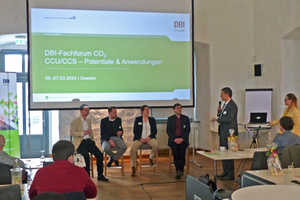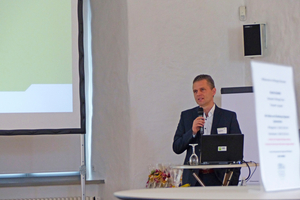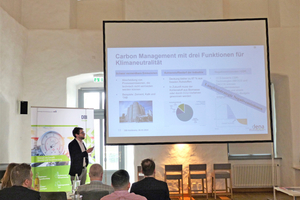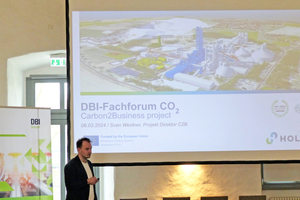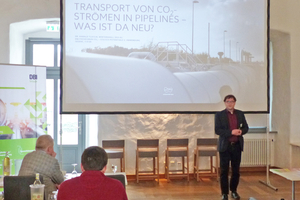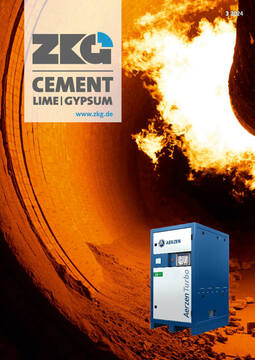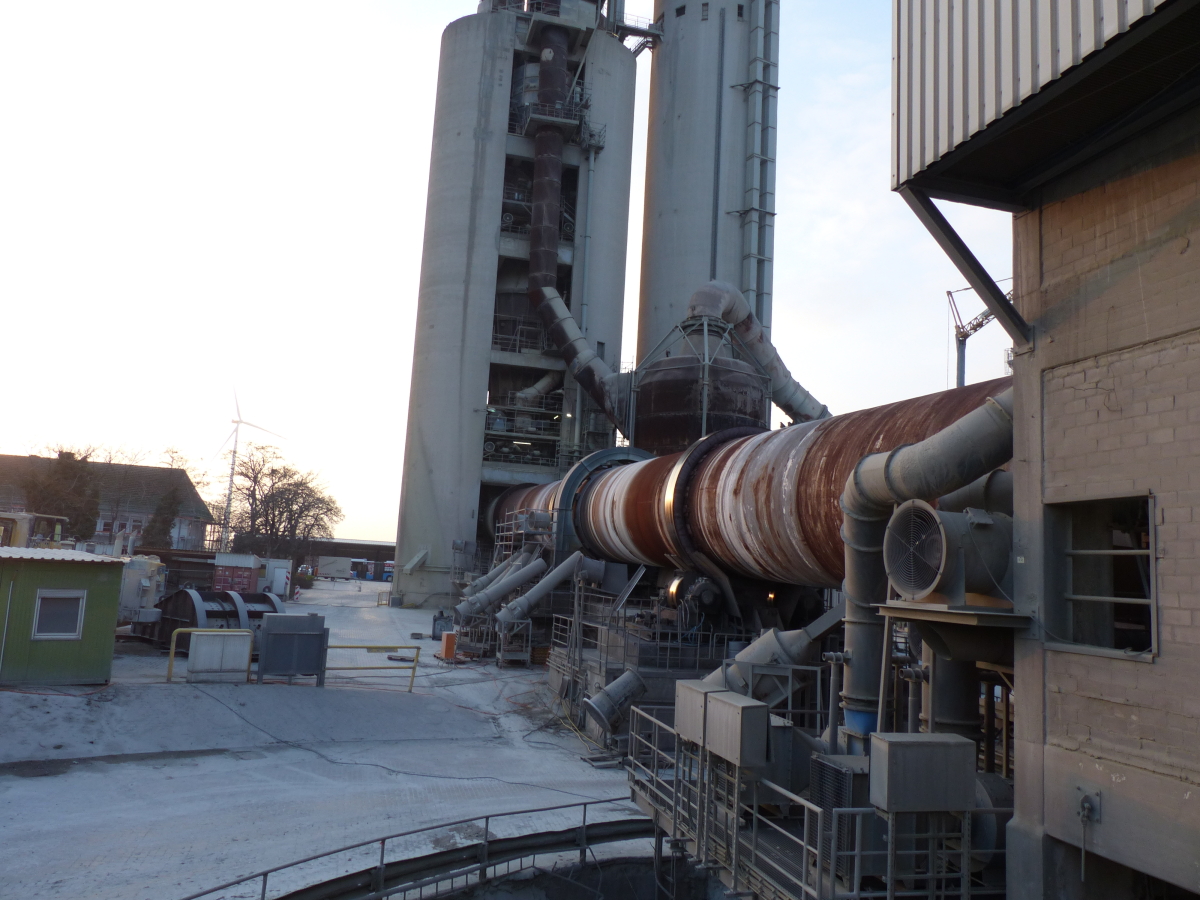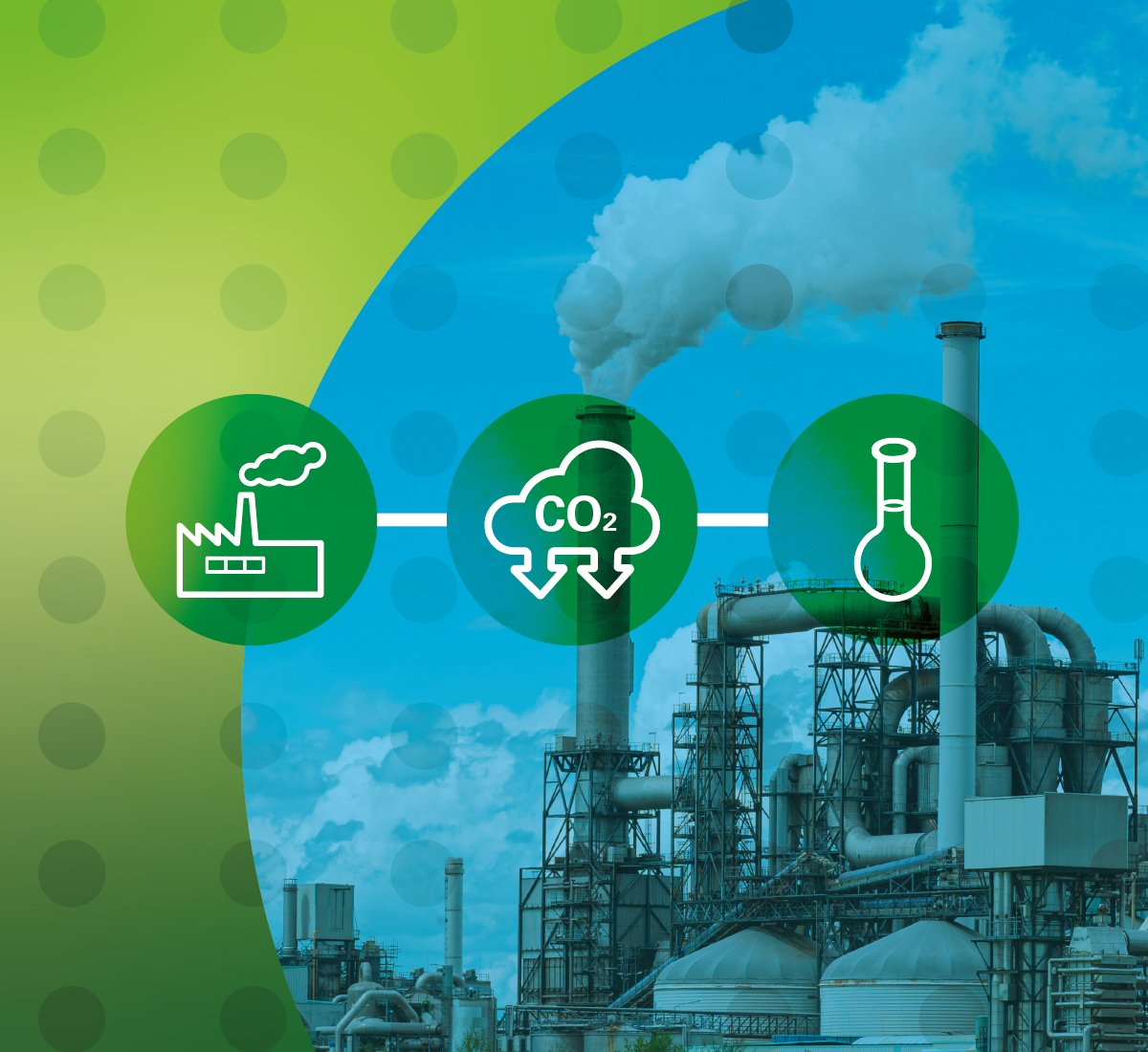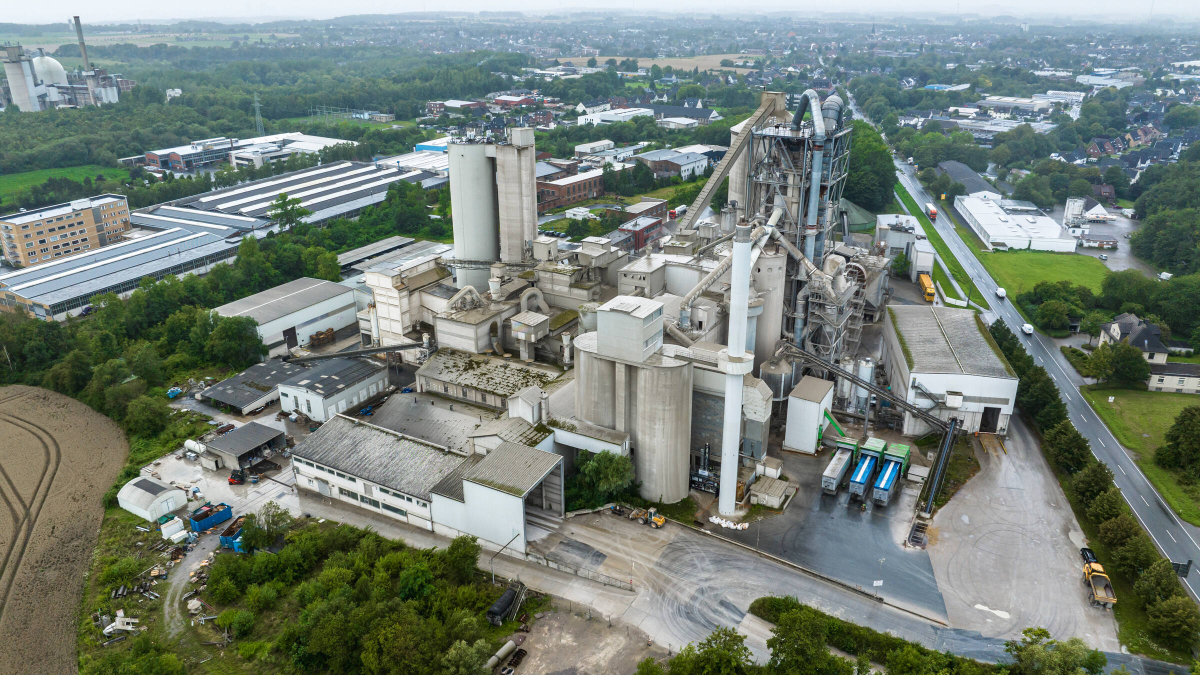DBI Expert Forum CO2: Emission-free future – a joint endeavor
Whether in the cement or chemical industry, from an environmental or legal point of view, politically or socially – the major goal of CO2 neutrality can only be achieved as a closed unit. This was the consensus at the DBI Fachforum CO2 (DBI CO2 Expert Forum) in Geseke. In the historic halls of the Störmede manor from March 6 to 7, 2024, representatives from a wide range of professional backgrounds – such as the cement industry, chemistry, politics and law – took a look at the present and (potential) future of CO2 capture, utilization and storage under the title “CCU/CCS – Potentials & Applications”. According to Dr. Jörg Nietzsche, moderator of the expert forum, the value of interdisciplinary cooperation cannot be overemphasized: “It takes allies to tackle the topic together.” Some topics of the expert forum at a glance.
Carbon management strategies in Germany in a European context
What exactly do the terms CCU, CCS and carbon management mean? An initial overview was provided by Pascal Hader-Weinmann from the German Energy Agency (dena), who presented “The German government’s CMS in a European context” at the expert forum. CCU stands for Carbon Capture and Utilization, i.e. the (further) use of CO2 for the production of fuels, building materials, plastics or chemicals. The impact on the climate varies depending on the source of the CO2 and how long the manufactured product remains in the atmosphere. The term CCS, on the other hand, stands for Carbon Capture and Storage and refers to the storage of CO2, for example in old oil or natural gas reservoirs or saline aquifers. This can either prevent CO2 emissions (fossil) or generate negative emissions (biogenic, atmospheric).
Specifically, according to the speaker, carbon management strategies can be used to derive three functions for climate neutrality:
Emissions that are technically difficult to avoid – for example in the cement or lime industry – are captured
Carbon from industry, 87% of which previously came from fossil raw materials, must now be obtained from biomass or CCU processes
Long-term strategy for negative emissions: CDR (Carbon Dioxide Removal)-based technologies (biogenic, atmospheric) can counteract an overshoot of the CO2 budget and offset residual emissions.
According to Hader-Weinmann, the goal of net zero can only be achieved through the use of Carbon Management Strategies (CMS).
Finally, the speaker juxtaposed the German carbon management strategy and the overall European targets. The following applies to Germany: “The focus of CMS is on process emissions from industry and the waste sector, which are currently technically unavoidable or difficult to avoid,” said Hader-Weinmann. Carbon management as a contribution to climate protection and a prerequisite for climate neutrality in industry is the overriding criterion here, and this is to be achieved through six specific steps:
1. giving priority to reducing the use of fossil energy sources
2. avoidance and exclusion of fossil lock-ins
3. evaluation and transparent process
4. balancing over the entire life cycle
5. environmental and safety standards
6. international embedding
There are also very specific models for CO2 capture in the EU. According to the speaker, the Industrial Carbon Management Strategy (ICMS) published in February 2024 envisages that ~ 50 Mt CO2 will be captured by 2030, ~ 280 Mt CO2 by 2040 and ~ 450 Mt CO2 by 2050. In addition, more than half of the captured CO2 is to become biogenic or atmospheric by 2050. Around 200 Mt of CO2 are to be reused industrially (CCU), while the remaining 250 Mt of CO2 will be stored (CCS).
According to Hader-Weinmann, ambitious strategies in both Germany and the EU are paving the way for the ramp-up of carbon capture utilization and carbon capture storage – but the German strategy is still “incomplete” in relation to the EU model. While the EU generally takes a technology-neutral approach, the German carbon management strategy also pursues a technology-neutral approach – albeit with a clear focus on emissions that are difficult to avoid, which is where funding programs come into play. In addition, the strategies set significant capture volumes in the electricity sector (EU) – fossil and biogenic – against the exclusion of coal-fired power plants and the avoidance of lock-ins. While the ICSM addresses CCU, CCS and CDR-based technologies, the German Carbon Management Strategy is supplemented by the key issues paper “Long-term strategy for negative emissions to deal with unavoidable residual emissions” (LNe).
Decarbonization in the cement plant through oxyfuel?
Sven Weidner presented a concrete example of what the path to CO2 neutrality in the cement industry could look like. As part of the Expert Forum, the speaker spoke about Holcim’s “Carbon2Business project”. Weidner made it clear: “Cement is the foundation of the modern world – but it absolutely must become more sustainable.” The building material is and will remain indispensable in the construction of buildings, for the infrastructure and in the energy transition, but sustainable solutions are essential to ensure that it continues to be available and does not continue to harm the climate. This is precisely where green cement production should come in. For Weidner and Holcim, the “Net Zero” approach is made up of four components:
Green operations responsible for decarbonization at Holcim itself
Building better with less decarbonization of the construction industry
Making buildings sustainable decarbonization of cities
Circular construction building new from old
According to Weidner, there is no alternative to green cement and green concrete, as the German cement industry is responsible for around 3% of total emissions with emissions of 20 million t/a CO2. Two thirds of the emissions in cement production are caused by raw materials, and the use of carbon capture technology could counteract this in future. The remaining third of emissions come from the combustion process and could be avoided in future by using green fuels and carbon capture technologies.
As an example of a green cement plant, Sven Weidner presented Holcim’s Carbon2Business project supported by the EU Innovation Fund at the Lägerdorf site, where the world’s first climate-neutral cement plant is to be operated by the end of the 2020s. The basic prerequisite for this is the construction of the new furnace line 12 and the use of the second-generation oxyfuel process. The technical concept behind it: By using pure oxygen (O2) – obtained from surplus oxygen generated in the region – instead of air in the combustion process as was previously the case, a CO2-enriched process gas is produced during cement production. The CO2 concentration in the process gas is increased to > 90% by removing the nitrogen from the air, which results in a reduction in the process gas volume flow, a reduction in NOx and a lower thermal energy requirement due to the use of pure oxygen. In addition, the oxyfuel process makes subsequent CO2 treatment and liquefaction much more efficient.
According to Weidner, the process captures almost 100% of CO2 emissions during cement production and saves over one million t/a of CO2 – the process gas is then processed into a high-purity CO2 gas for the chemical industry and used as a raw material for other industries. The necessary conditions are to be created for this: The CO2/O2 pipelines will then run as planned in future via Schleswig-Holstein to Brunsbüttel and Heide. On the first route, the CO2 pipeline will run from Lägerdorf to the CO2 hub in Brunsbüttel (~ 30 km). On the second section, the CO2 pipeline continues from Brunsbüttel to the methanol synthesis plant in the HySCALE100 project in Heide (~ 30 km) for material use. The O2 pipeline in turn runs from the electrolysis plant in Heide to Lägerdorf.
From a Carbon2Business perspective, political support in 6 aspects is still urgently required to realize the project:
1. pipeline connection
2. grid connection
3. approval process
4. securing raw materials
5. port connection Brunsbüttel
6. fall-back option CCS
CO2 transportation in pipelines: What’s new?
Dr. Harald Tlatlik, Wintershall Dea AG, spoke about the CCUS value chain and the challenges and opportunities of transporting CO2 via pipelines under the title “Transporting CO2 streams in pipelines – what’s new?” The speaker made it clear: “There is no way around storage!” – This is made clear by both the “Draft of a First Act to Amend the Carbon Dioxide Storage Act” of the Federal Ministry of Economics and Climate Protection and the “Net Zero Industry Act” of the Council of the European Union.
The CCUS value chain essentially consists of three steps:
Emitter (+ cleaning/compression) According to Tlatlik, this is a highly individual and the most expensive process step, but due to the competition, it is important to keep the overall costs as low as possible. There are currently no “off-the-shelf” solutions, and low purity requirements are generally desirable.
Transport (pipelines vs. tank transport) CO2 transport via pipeline takes place at ambient temperature, under high pressure, is tolerant of contamination and is cheaper than tank transport (train/ship/truck) with high purity, but is inflexible in terms of transport route. On the other hand, tank transportation is more flexible, but at a low temperature, under low pressure and only with a high CO2 purity, which should be avoided if possible due to the high costs. Additional traffic is also generated.
Sink: At the end of the value chain, the CO2 is processed into rock (Carbon Capture Storage) or (energy-intensive) further processed (Carbon Capture Utilization).
According to Dr. Tlatlik, CO2 transport poses a number of special challenges that must always be taken into account. For example, chemical reactions can occur during transportation, and unintentional phase formation must also be avoided at all costs, as it is difficult to re-dissolve. Aqueous phases or corrosion could also prove problematic during CO2 transport. Finally, the process of filling and empty-ing is comparatively demanding or – if cracks progress faster than pressure can be released at the crack tip – ongoing shear cracks occur.
With regard to CO2 transport options, large companies can often be expected to have their own facilities for cleaning and compression as well as sufficient specialist personnel and expertise, and a fairly constant amount of CO2 in sufficient quantity can be assumed. However, some problems could arise for small and medium-sized companies: On the one hand, emission quantities are small and may occur irregularly, and on the other hand, there may be a lack of specialist personnel and expertise. For collection by truck or train, purification and compression on site would be necessary, and direct feeding into the grid would probably be difficult overall. Dr. Tlatlik postulated two possible solutions to overcome the problem:
Purification and compression in mobile units could, however, prove to be a difficult undertaking
Regional centers for purification and compression however, this would require, for example, low-pressure plastic pipelines for transport, and legal problems could also arise
Tlatlik concludes the presentation with four final messages:
1. The understanding of (additional) chemical-physical processes is advanced – issues that still need to be clarified are known
2. Due to the still open issues, the topic of CO2 transport is often interpreted very conservatively – but the transport is safe
3. With increasing operating experience, a less conservative design and less conservative operation will be possible
4. Technical and scientific understanding is required for the construction and operation of CO2 pipelines – standardization for this is still being developed
CO2 capture using membrane technology: a visit to the Wittekind cement plant
As a special item on the program, Lars Richter and his colleagues from Portlandzementwerk Wittekind (Wittekind Portland cement plant) gave the participants of the Expert Forum a tour of the cement plant and presented a newly constructed pilot plant for CO2 separation using membranes as part of the excursion. Read our article on this in ZKG 2/2024 or at https://www.zkg.de/en/artikel/co2-capture-using-membrane-technology-a-visit-to-the-wittekind-cement-plant-4081571.html
Dr Jens Erfurth, Open Grid Europe GmbH, spoke about limit values for CO2 impurities as a prerequisite for any technical connection, political framework conditions and the phase behavior of CO2, among other things. You can read more about this topic in an article by Dr Jens Erfurth in ZKG 7/2024, this year’s edition of our Green Challenge.
Dr Johannes Ruppert, Verband Deutscher Zementwerke (VDZ), presented the current VDZ roadmap to climate neutrality and emphasized the need to seek dialogue with key players and the interested public in order to increase social tolerance for new technologies.
Dr Michael Neupert, Kümmerlein, Simon & Partner Rechtsanwälte mbB, clarified legal issues surrounding the topic of CO2. Looking to the future, he noted that the legislator is active and that legal issues can be easily resolved. Although the circular economy as a major goal is associated with many challenges (gas quality, grid regulations, start-up financing), approval procedures are easy to manage as the requirements from product and/or waste legislation are already known.

